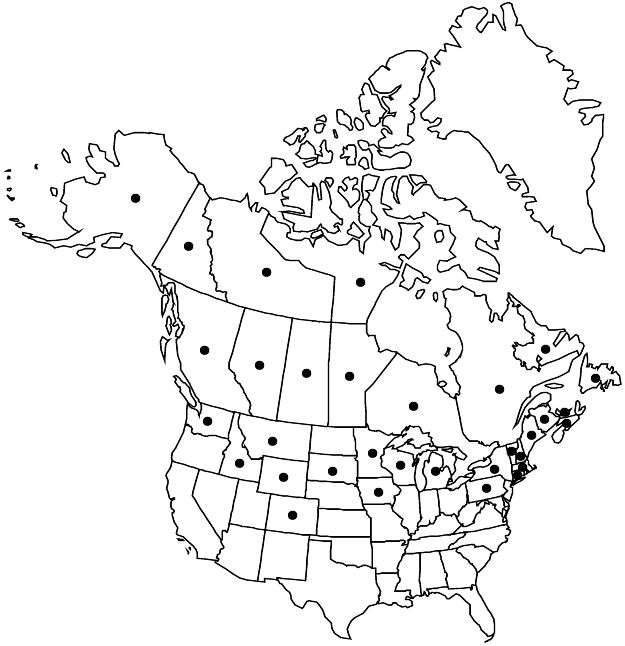Difference between revisions of "Viola renifolia"
Proc. Amer. Acad. Arts 8: 288. 1870.
FNA>Volume Importer |
FNA>Volume Importer |
(No difference)
| |
Revision as of 22:43, 16 December 2019
Plants perennial, acaulescent, not stoloniferous, 5–30 cm; rhizome thick, fleshy. Leaves basal, 1–5, prostrate to ascending; stipules linear-lanceolate, margins entire to sparsely laciniate, apex acute; petiole 3–10 cm, strigose, sericeous, or villous, occasionally glabrous; blade unlobed, reniform or ovate to broadly ovate or orbiculate, 1.5–3.5 × 2–5 cm, base cordate to broadly cordate, margins serrate-crenate, ciliate or eciliate, apex acute, obtuse, or rounded, occasionally acuminate, surfaces usually sparsely to densely strigose, sericeous, or villous throughout or along veins, sometimes glabrous. Peduncles 3–8 cm, puberulent. Flowers: sepals lanceolate to ovate, margins usually eciliate, auricles 1–2 mm; petals white on both surfaces, lower 3 purple-veined, all beardless or lower 3 sparsely bearded, lowest 8–10 mm, spur white, gibbous, 2–3 mm; style head beardless; cleistogamous flowers on prostrate to ascending peduncles. Capsules ovoid to ellipsoid, 5–8 mm, glabrous. Seeds mottled beige to bronze, 1.5–2.2 mm. 2n = 24.
Phenology: Flowering Apr–Jun.
Habitat: Moist, often shaded alluvial or upland forests, shrub thickets, stream banks, swamp forests, bogs, fens
Elevation: 200–3000 m
Distribution

Alta., B.C., Man., N.B., Nfld. and Labr., N.W.T., N.S., Nunavut, Ont., P.E.I., Que., Sask., Yukon, Alaska, Colo., Conn., Idaho, Iowa, Maine, Mass., Mich., Minn., Mont., N.H., N.Y., Pa., S.Dak., Vt., Wash., Wis., Wyo.
Discussion
Nonflowering plants of Viola renifolia and V. epipsila appear similar. The abaxial leaf surfaces of V. renifolia usually have a few short, straight hairs on the main veins; leaves of V. epipsila are usually glabrous (C. Parker, pers. comm.). Viola renifolia can appear similar to V. macloskeyi. V. B. Baird (1942) wrote that V. renifolia sometimes produces ascending stems. H. A. Gleason and A. Cronquist (1991) noted that if stolons were present, they were short and racemelike with cleistogamous flowers. The ascending stems and stolons mentioned by these authors may or may not be different phases of the same structure.
Selected References
None.